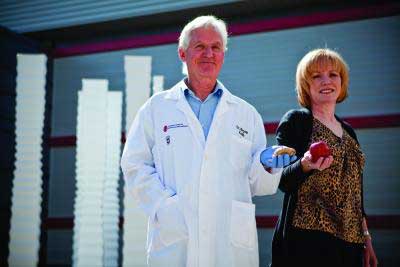At the central Alberta school where Melissa Pasolli (BEd '91) works as a special-education coordinator, there's a little girl with Down syndrome who studies with kids just a year younger. For the most part, she follows along when the group learns simple math or works on art projects. If a lesson goes beyond her capabilities, she does a special project with a teaching assistant.
Pasolli is a firm believer in including kids with learning disabilities, however mild or pronounced, in a regular classroom.
"As long as I see that there's an increase in knowledge or skills, I feel the classroom is the proper place," says the U of L alumna. "Kids with different learning abilities can both learn with each other and from each other, especially where social skills are concerned."
But Pasolli knows it can be tough for teachers, who don't often receive formal education about learning disabilities but are increasingly required to work with kids who have them. That's why she's glad to hear of a new U of L program designed to fill in the knowledge gaps for teachers encountering students with learning and behavioural issues.

"Just accepting the idea that not every student learns the same is huge and can only make you a better teacher," says Pasolli.
The U of L's new Inclusive Education and Neuroscience Master of Education program is the first of its kind in Western Canada. When the program launches in 2011, it will bring educators and neuroscientists together, and put brain-based neuroscience research directly into the classroom.
Dr. Nancy Grigg, education professor and program co-ordinator, explains that it's only in the last five years that efforts have begun to bridge the gap between neuroscience and education. "There's a deeper understanding of how the development of parts of the brain relates to how kids learn, and how specific regions relate to certain deficits in areas such as comprehension, concentration and memory," she says.
With this awareness, teachers can use more effective methods of intervention to help children with learning disabilities develop strategies that compensate for their weaknesses by relying on other, and better-developed, cognitive processes.
But just as the development of the brain affects how kids learn, the way they learn can influence how the brain develops, explains Dr. Bryan Kolb, a world-renowned researcher at the U of L's Canadian Centre for Behavioural Neuroscience.
"Using the right interventions can make a tremendous difference," he says. "Children are like sponges. They soak things up as they go along and this changes their brains. Different experiences put kids on different trajectories."
Kolb stresses that the U of L's new master's degree will focus on neuroscience principles and how they relate to teaching, rather than hard science.
"There's no reason for teachers to know all of the details of molecular neurobiology. It's about knowing what it means and how to translate it to the classroom," says Kolb.
For Alberta teachers, the creation of the new program couldn't come at a better time as the challenges teachers face continue to grow. "We're serving more children, and children from more diverse backgrounds with different needs," says Grigg.
The program will also come into being around the time Alberta Education's new Setting the Direction Framework comes into place, which requires schools to take all children, regardless of any special needs, and place them in regular classrooms.
"All teachers will be dealing with learning and behavioural needs," Grigg says. "Our goal is to have a direct impact on improving how teachers can help their students."
For a look at the full issue of SAM in a flipbook format, follow this link.
